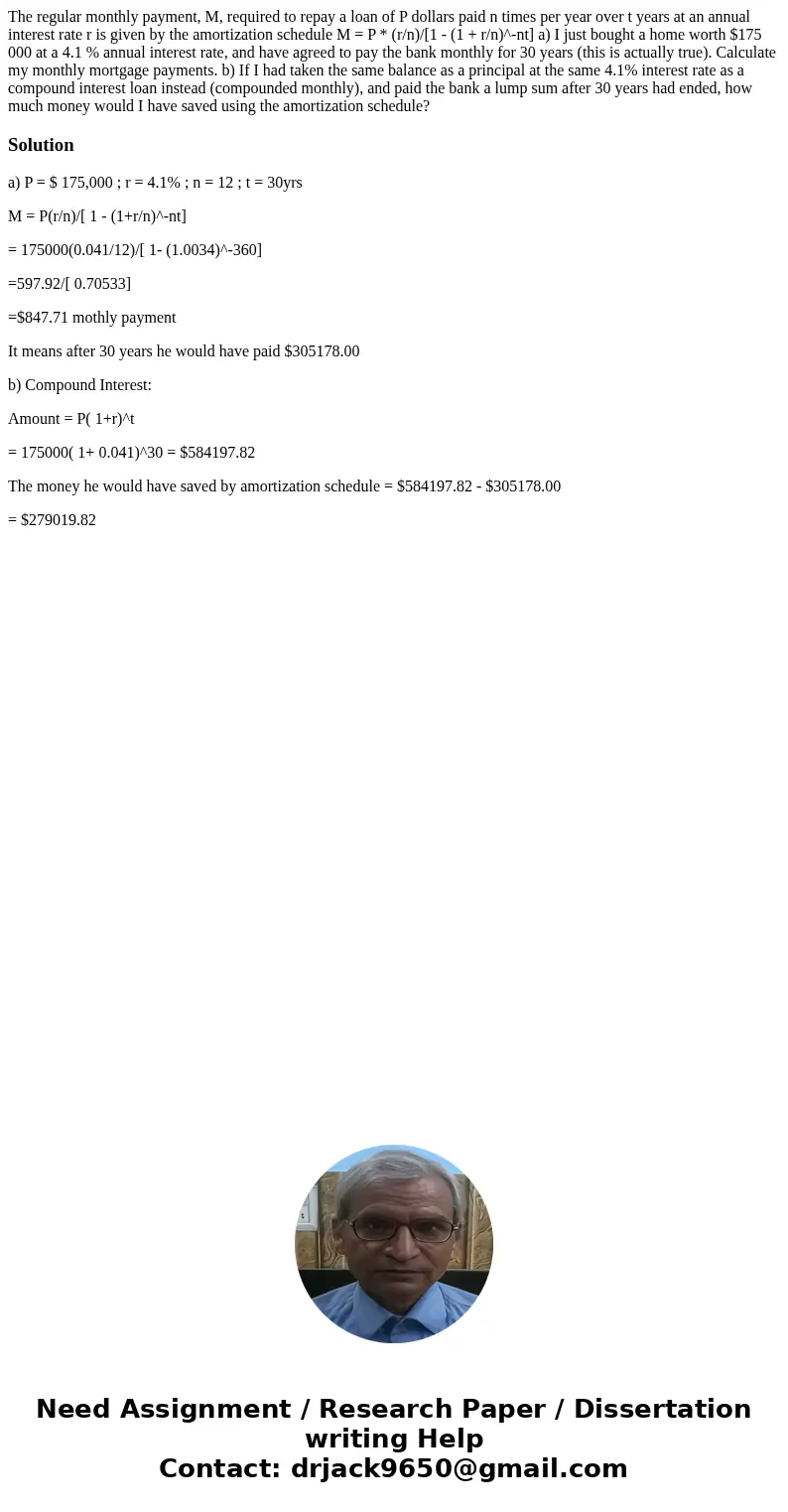The regular monthly payment M required to repay a loan of P
The regular monthly payment, M, required to repay a loan of P dollars paid n times per year over t years at an annual interest rate r is given by the amortization schedule M = P * (r/n)/[1 - (1 + r/n)^-nt] a) I just bought a home worth $175 000 at a 4.1 % annual interest rate, and have agreed to pay the bank monthly for 30 years (this is actually true). Calculate my monthly mortgage payments. b) If I had taken the same balance as a principal at the same 4.1% interest rate as a compound interest loan instead (compounded monthly), and paid the bank a lump sum after 30 years had ended, how much money would I have saved using the amortization schedule?
Solution
a) P = $ 175,000 ; r = 4.1% ; n = 12 ; t = 30yrs
M = P(r/n)/[ 1 - (1+r/n)^-nt]
= 175000(0.041/12)/[ 1- (1.0034)^-360]
=597.92/[ 0.70533]
=$847.71 mothly payment
It means after 30 years he would have paid $305178.00
b) Compound Interest:
Amount = P( 1+r)^t
= 175000( 1+ 0.041)^30 = $584197.82
The money he would have saved by amortization schedule = $584197.82 - $305178.00
= $279019.82

 Homework Sourse
Homework Sourse